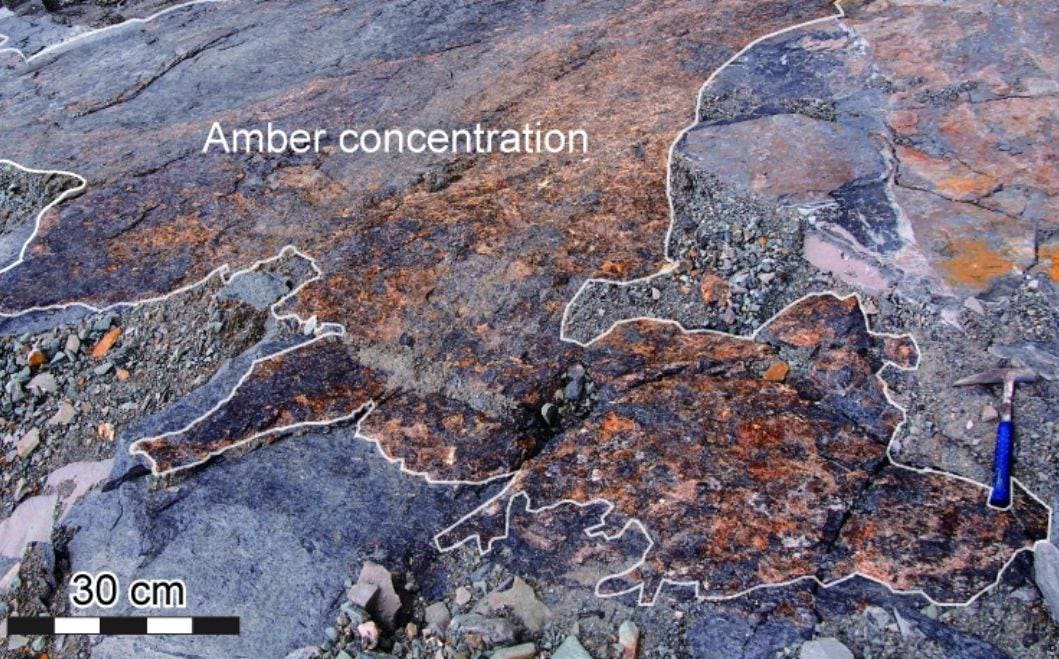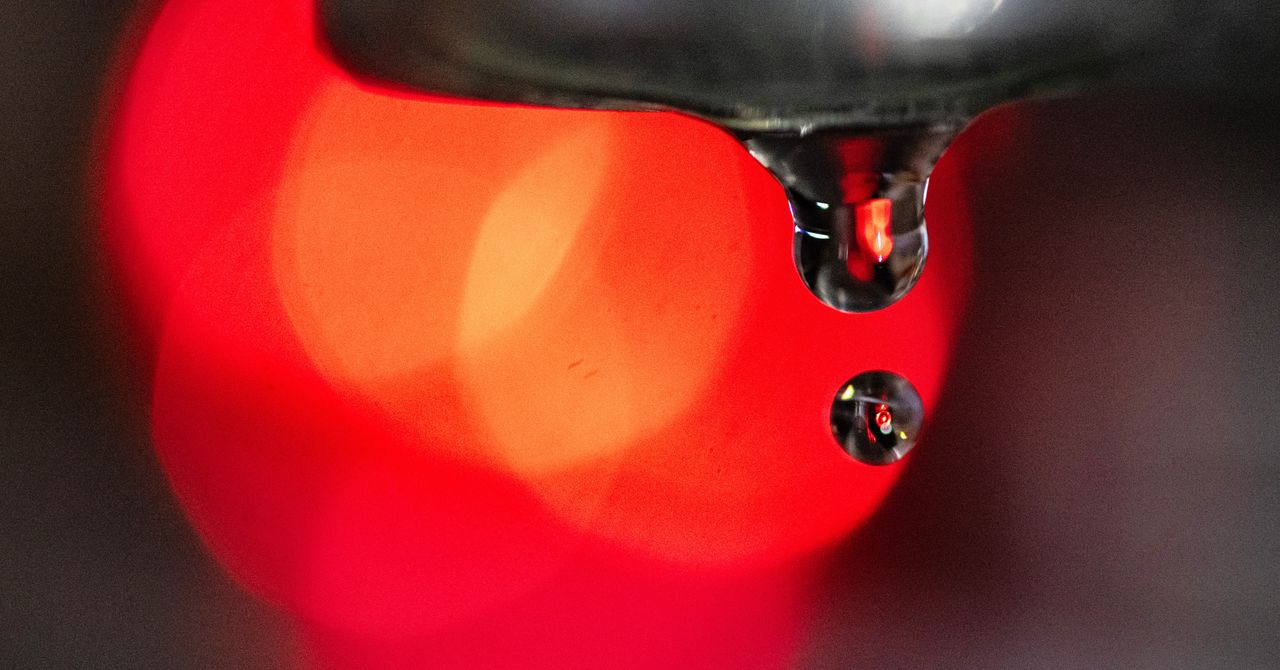Amber concentration in deep-sea sediments.
Traces of tsunamis are hard to identify in the fossil record. Tsunami deposits along a coast are washed away or can be confused with other high-energy events, such as storms.
In a new study, Aya Kubota and colleagues from the Geological Survey of Japan and Chuo University analyzed extraordinarily rich amber-concentrated beds found in a quarry on Hokkaido Island in northern Japan. Between the grey layers of sand- and mudstone deposited on the seafloor, the yellow amber — fossil tree resin formed typically on land — sticks out. Based on radiometric dating of zircon grains preserved in tuff layers interbedded between the mudstone and amber beds, the entire sedimentary succession formed around 116 and 114 million years ago.
So-called flame structures, which form when soft material is folded or flattened before fully hardening, help to explain how the strange amber deposits formed.
Amber layers seen under fluorescent light and daylight show flattening of the single amber … More
In the early Cretaceous, while the region was a oceanic basin, large amount of tree resin was rapidly swept out from a nearby coast to the open ocean by the backwash from one or more tsunamis. The tree resin then sank to the seafloor where it was covered by sediments, deforming the single fragments and preserving them as amber.
Similar concentrations of material originating on land and transported to open waters may be helpful in finding further tsunamis, the researchers conclude.
Most tsunamis are generated by earthquakes, when the seafloor shifts suddenly and displaces a large quantity of water, but they can also be triggered by a landslide, a volcanic eruption or a meteor impact.
Modern databases list more than 2.000 tsunamis in the last 4.000 years. Most of these records are based on historical documents and likely underestimate the real number. Geological evidence can provide a deeper understanding of past extreme events and is critical for hazard preparation and risk assessment now and in the future.
The study,“Amber in the Cretaceous deep sea deposits reveals large-scale tsunamis,” was published in the journal scientific reports.
Additional material provided by the Nature Publishing Group.








